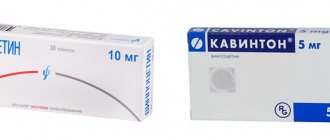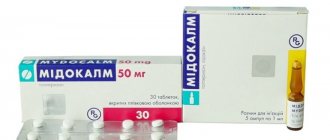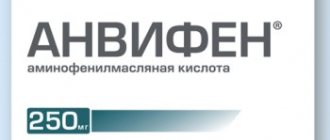The central nervous system regulates the functioning of the body as a whole, so violations of its function are always dangerous for humans. Early diagnosis of central nervous system diseases significantly increases the chances of recovery and reduces the risk of complications. In order to identify pathological changes in nerve cells, modern hardware examination methods are used: computer and magnetic resonance imaging. To determine the optimal diagnostic method, you need to know how CT differs from MRI of the brain.
CT angiography of cerebral vessels, three-dimensional image
Which is better: CT or MRI of the brain?
Tomography involves scanning the human body using X-rays or electromagnetic pulses. As a result of scanning the brain, a special computer program converts the response of the examined tissues into a series of layer-by-layer photographs reflecting changes in the structure, shape, and size of the organ being studied.
Each method has its own advantages; the decision to prescribe CT or MRI is made by the attending physician. The brain has a complex structure, pathological changes in any part lead to disruption of the vital functions of the whole organism, so the doctor chooses a diagnostic method based on the clinical manifestations of the process.
CT is used to determine the condition of solid elements, scan the skull bones, identify traumatic lesions, hematomas, and large areas of atherosclerosis. Computed tomography is informative regarding dense structures, and the examination process itself takes less time than MRI. The cost of CT is much lower than similar scanning using a magnetic field. The method is well suited for identifying neoplasms that develop with the involvement of bone elements. The use of contrast in brain examination increases the information content of tomography, allows for a detailed study of the state of the vascular system of the brain and differentiates between hemorrhages and bleeding in cases of skull injuries.
Comminuted fracture of the skull bones and a focus of contusion of the left hemisphere of the brain on CT
MRI is more informative when studying the condition of soft tissues and nerve fibers. The method gives a detailed picture of the state of the cerebral cortex, reflects the nature of the blood supply to this area, and reveals minor changes in the structure of the substance. Such scanning is indispensable in diagnosing malignant tumors in the early stages. Vascular MRI angiography visualizes disturbances in the blood supply to various areas and the consequences of ischemia of cerebral structures.
Brain cavernomas on MRI
The use of a magnetic field is harmless to the body, so MRI scanning can be performed repeatedly. This advantage is used when necessary to observe the process over time and monitor the effectiveness of treatment measures. The method is suitable for diagnosing brain pathologies in pregnant women, children and people who have contraindications to the use of X-ray radiation.
Disadvantages of CT
Whatever you say, an x-ray is an x-ray. And in large quantities it is not at all useful.
- Therefore, justification for conducting the study is required: to exclude unnecessary exposure of patients
- Consider using MRI, ultrasound to obtain the required diagnostic information
- CT examinations should not be repeated without clinical justification; they should be limited to the area of interest
- The physician is responsible for interacting with the radiologist regarding the patient's previous CT scans.
- CT studies for research purposes, in the absence of clinical justification (direct benefit to the patient being studied), should be subject to critical review.
During a CT examination, it is impossible, for example, to scan the entire spine - only a small part of it. The patient will receive an increased dose of radiation.
Disadvantages of MRI
- The need to create a magnetic field of high intensity, which requires large energy costs when operating equipment and/or the use of expensive technologies to ensure superconductivity. The good news is that in the scientific literature there is no data on the negative effects of high-power magnets on health.
- Impossibility of reliable detection of stones, calcifications, and some types of pathology of bone structures.
- Difficulty in examining some patients, for example, with claustrophobia (fear of closed spaces), artificial pacemakers, large metal implants. We should not forget that a relative contraindication for MRI is pregnancy. Well, pacemakers are a strict contraindication for the study.
MRI and CT procedures differ in time.
While a CT scan of one part of the body may take several minutes, an MRI scan of the same part may take up to half an hour. There is a cost difference between MRI and CT. MRI is traditionally more expensive.
How does an MRI differ from a CT scan of the brain?
The main difference between MRI and CT scan of the brain is the use of relevant physical phenomena to visualize the state of body tissues.
In a CT scan, the scan is done using x-rays. Hard and soft structures absorb ionizing radiation with different intensities, resulting in dark and light areas appearing on the film. They correspond to areas of reduced or increased hardness. By studying changes in the density of the structure of bone and cartilage tissue, it is possible to recreate a picture of the state of the studied area.
Unlike CT, MRI uses a magnetic field of varying intensity for scanning (which determines the power of the tomograph). It affects the location of water dipoles in the cells of the medulla. The response from fluid-saturated structures will be higher, so the information content of the method increases when scanning soft tissues. MRI of the brain shows minute changes in the brain matter, reflects demyelination processes, and reveals the growth and development of atypical cells.
Thanks to the use of a magnetic field, MRI does not have a negative effect on the human body, which distinguishes this method from computed tomography.
Operating principle of MR tomograph
The operation of the device is based on the interaction of hydrogen atoms of body tissues with a powerful magnetic field of a constant nature and high voltage (up to 3 Tesla). But the field itself does not provide any information; it only brings hydrogen atoms into an active state, allowing them to interact with an alternating electromagnetic field of a certain frequency. The atoms of different tissues react to it differently. This is caught by special detectors and processed on an internal computer.
In what cases is MRI of the brain prescribed?
Indications for head tomography are various pathological processes affecting the central nervous system and skull bones. The doctor analyzes the patient’s symptoms and complaints to choose the optimal diagnostic method: CT or MRI of the brain.
Magnetic resonance examination is carried out with the following clinical picture:
- headaches, dizziness, short-term loss of consciousness;
- the presence of paresis, decreased sensitivity of the tissues of the face, torso, and limbs;
- suspicion of the presence of neoplasms;
- signs of inflammation of the meninges;
- hearing impairment;
- decreased visual acuity;
- the appearance of sudden seizures;
- tingling, pain in the facial area;
- ischemic lesions of areas of the brain.
MRI is prescribed for conservative and surgical treatment of central nervous system diseases to monitor effectiveness. For malignant tumors, the method allows one to monitor the process of tumor development and determine the results of therapeutic and surgical effects on malignant areas.
Thanks to MRI, the following pathological processes affecting various parts of the brain are determined:
- benign and malignant formations of soft tissues, brain matter and its membranes, cranial nerves, vascular tumors;
- inflammatory processes – encephalitis, meningitis, abscess;
- organic lesions – encephalopathy, etc.;
- congenital developmental anomalies;
- cerebral ischemia in the acute stage and consequences of hemorrhagic stroke;
- degenerative processes - Alzheimer's, Pick's, Parkinson's diseases;
- demyelinating pathologies - multiple sclerosis, etc.
Diseases accompanied by changes in the structure of the brain matter are detected in the early stages thanks to magnetic resonance imaging. Scanning parts of the brain in the axial, sagittal and frontal planes provide a clear picture of the condition of soft tissues and fluid structures. Based on a series of photographs of the study area, a 3D model of the study area can be constructed.
Germinoma of the brain, MRI image
Advantages
- CT diagnostics provide more complete and accurate information about hard formations, bone density, and damage to lymph nodes in the body;
- MRI diagnostics will provide more information about the condition in the soft tissues of the body and the presence of an inflammatory process.
Please note that before making a final decision on which diagnostic method to use, be sure to consult with your doctor. There are situations when it is necessary to conduct both studies.
In what cases is a CT scan of the brain prescribed?
Tumors of the cerebral cortex can deform and thin the bones of the skull and grow into nearby sinuses. In this case, computed tomography reveals changes in solid structures, allows you to localize the process and determine its nature.
Brain injuries are often associated with damage to bone tissue, which performs a protective function. The formation of hematomas and hemorrhages can also be a consequence of mechanical damage.
Such conditions require prompt diagnosis and effective treatment. To identify pathological changes in the bone and cartilaginous structures of the skull and assess the nature of the blood supply to the brain, the doctor may prescribe computed tomography, which is a fast and accurate diagnostic method.
CT is indicated in the following cases:
- open and closed skull injuries;
- headaches, dizziness of unknown etiology;
- history of inflammatory processes in the area of the meninges;
- previously diagnosed strokes, cysts, brain abscesses;
- suspicion of the presence of neoplasms;
- changes in the shape of the skull;
- unexplained neurological symptoms (convulsions, fainting);
- suspicion of the presence of a foreign body in the cranial cavity;
- possible hematoma, cerebral edema;
- hemorrhagic stroke in acute and subacute stages;
- suspicion of the existence of cerebral vascular anomalies (aneurysms, arteriovenous malformations).
The presence of contraindications to the use of a magnetic field in the diagnosis of diseases of the central nervous system is also the reason for prescribing CT.
Using computed tomography, the following pathologies are determined:
- fractures, cracks of the skull bones;
- hemorrhages and hematomas due to any reason;
- benign and malignant formations involving bone and cartilaginous structures;
- cerebral aneurysms;
- strokes.
A CT scan of the brain is performed with contrast, which allows one to see the characteristics of the blood supply to this area and identify pathologies of the vascular system.
Consequences of hemorrhagic cerebral stroke on CT
What is more informative, CT or MRI of the brain?
The information content of each method depends on the area of application and the task set by the attending physician.
Computed tomography visualizes the condition of bone and cartilage structures, with its help the nature of damage in head injuries is determined, the condition of blood vessels is assessed and some brain tumors are identified. For soft tissues, the method is less informative, since they have weak radiopacity.
The reliability of CT scanning can be increased by using a contrast agent administered intravenously. The solution enters the bloodstream and highlights the vascular system of the scanned area in the image. Such a study is relevant in the presence of neoplasms that have their own special network of arterioles, aneurysms, especially if a rupture is suspected, arteriovenous malformations, arterial sinus anastomosis.
MRI displays in detail the condition of soft tissues, membranes of the brain and its substance, and nerve fibers. The quality of the image when scanning with an electromagnetic field depends on the saturation of the tissue with liquid. The use of a contrast solution increases the information content of the method in relation to focal brain pathology.
Magnetic resonance imaging detects malignant processes at an early stage.
Who chooses the scanning method?
Ultimately, the attending physician writes out the referral for examination, so the final decision on the choice of one method or another is made by him. Of course, the doctor is guided not only by personal experience. The choice of research method is influenced by the following factors
:
- Criteria for choosing diagnostics laid down in EMIAS.
- Recommendations from experts of the Scientific and Practical Center for Medical Radiology of the Department of Health.
- Materials of the Unified Radiological Information Service (ERIS).
The results of all surveys conducted are collected into a single database. They are later analyzed by experts and given feedback to radiologists. This is useful for improving your skill level. Sometimes errors may be discovered during verification. This will be reported to the attending physician, who will contact the patient to invite him for a re-examination.









